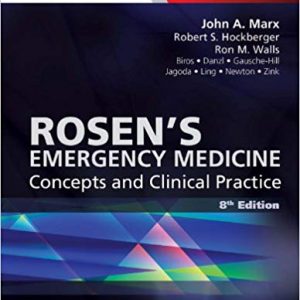Buy Principles of Macroeconomics, 9th Edition PDF ebook by author N. Gregory Mankiw – published by Cengage Learning in 2021 and save up to 80% compared to the print version of this textbook. With PDF version of this textbook, not only save you money, you can also highlight, add text, underline add post-it notes, bookmarks to pages, instantly search for the major terms or chapter titles, etc.
You can search our site for other versions of the Principles of Macroeconomics, 9th Edition PDF ebook. You can also search for others PDF ebooks from publisher Cengage Learning, as well as from your favorite authors. We have thousands of online textbooks and course materials (mostly in PDF) that you can download immediately after purchase.
Note: e-textBooks do not come with access codes, CDs/DVDs, workbooks, and other supplemental items.
eBook Details:
Full title: Principles of Macroeconomics, 9th Edition
Edition: 9th
Copyright year: 2021
Publisher: Cengage Learning
Author: N. Gregory Mankiw
ISBN: 9780357133873, 9780357133866
Format: PDF
Description of Principles of Macroeconomics, 9th Edition:
Now you can master the principles of macroeconomics with the help of the most popular introductory book in economics trusted by students of economics worldwide — Mankiw’s PRINCIPLES OF MACROECONOMICS, 9E. Using a clear, inviting writing style, this book emphasizes only material that helps you better understand the world and economy in which you live. You learn to become a more astute participant in today’s economy with a strong understanding of both the potential and limits of economic policy. The latest, relevant examples throughout this edition bring today’s macroeconomic principles to life, as acclaimed author Gregory Mankiw explains, “”I tried to put myself in the position of someone seeing economics for the first time. My goal is to emphasize the material that readers find interesting about the study of the economy.”” Real scenarios, useful economic facts, and clear explanations demonstrate how macroeconomic concepts play a role in the decisions you make every day.Important Notice: Media content referenced within the product description or the product text may not be available in the ebook version.
Table of Contents of Principles of Macroeconomics, 9th Edition PDF ebook:
About the AuthorPreface: To the InstructorBrief ContentsContentsPreface: To the StudentChapter 1: Ten Principles of Economics1-1 How People Make Decisions1-2 How People Interact1-3 How the Economy as a Whole Works1-4 ConclusionChapter in a NutshellKey ConceptsQuestions for ReviewProblems and ApplicationsChapter 2: Thinking Like an Economist2-1 The Economist as Scientist2-2 The Economist as Policy Adviser2-3 Why Economists Disagree2-4 Let’s Get GoingChapter in a NutshellKey ConceptsQuestions for ReviewProblems and ApplicationsAppendix Graphing: A Brief ReviewChapter 3: Interdependence and the Gains from Trade3-1 A Parable for the Modern Economy3-2 Comparative Advantage: The Driving Force of Specialization3-3 Applications of Comparative Advantage3-4 ConclusionChapter in a NutshellKey ConceptsQuestions for ReviewProblems and ApplicationsChapter 4: The Market Forces of Supply and Demand4-1 Markets and Competition4-2 Demand4-3 Supply4-4 Supply and Demand Together4-5 Conclusion: How Prices Allocate ResourcesChapter in a NutshellKey ConceptsQuestions for ReviewProblems and ApplicationsChapter 5: Elasticity and Its Application5-1 The Elasticity of Demand5-2 The Elasticity of Supply5-3 Three Applications of Supply, Demand, and Elasticity5-4 ConclusionChapter in a NutshellKey ConceptsQuestions for ReviewProblems and ApplicationsChapter 6: Supply, Demand, and Government Policies6-1 Controls on Prices6-2 Taxes6-3 ConclusionChapter in a NutshellKey ConceptsQuestions for ReviewProblems and ApplicationsChapter 7: Consumers, Producers, and the Efficiency of Markets7-1 Consumer Surplus7-2 Producer Surplus7-3 Market Efficiency7-4 Conclusion: Market Efficiency and Market FailureChapter in a NutshellKey ConceptsQuestions for ReviewProblems and ApplicationsChapter 8: Application: The Costs of Taxation8-1 The Deadweight Loss of Taxation8-2 The Determinants of the Deadweight Loss8-3 Deadweight Loss and Tax Revenue as Taxes Vary8-4 ConclusionChapter in a NutshellKey ConceptQuestions for ReviewProblems and ApplicationsChapter 9: Application: International Trade9-1 The Determinants of Trade9-2 The Winners and Losers from Trade9-3 The Arguments for Restricting Trade9-4 ConclusionChapter in a NutshellKey ConceptsQuestions for ReviewProblems and ApplicationsChapter 10: Measuring a Nation’s Income10-1 The Economy’s Income and Expenditure10-2 The Measurement of GDP10-3 The Components of GDP10-4 Real versus Nominal GDP10-5 Is GDP a Good Measure of Economic Well-Being?10-6 ConclusionChapter in a NutshellKey ConceptsQuestions for ReviewProblems and ApplicationsChapter 11: Measuring the Cost of Living11-1 The Consumer Price Index11-2 Correcting Economic Variables for the Effects of Inflation11-3 ConclusionChapter in a NutshellKey ConceptsQuestions for ReviewProblems and ApplicationsChapter 12: Production and Growth12-1 Economic Growth around the World12-2 Productivity: Its Role and Determinants12-3 Economic Growth and Public Policy12-4 Conclusion: The Importance of Long-Run GrowthChapter in a NutshellKey ConceptsQuestions for ReviewProblems and ApplicationsChapter 13: Saving, Investment, and the Financial System13-1 Financial Institutions in the U.S. Economy13-2 Saving and Investment in the National Income Accounts13-3 The Market for Loanable Funds13-4 ConclusionChapter in a NutshellKey ConceptsQuestions for ReviewProblems and ApplicationsChapter 14: The Basic Tools of Finance14-1 Present Value: Measuring the Time Value of Money14-2 Managing Risk14-3 Asset Valuation14-4 ConclusionChapter in a NutshellKey ConceptsQuestions for ReviewProblems and ApplicationsChapter 15: Unemployment15-1 Identifying Unemployment15-2 Job Search15-3 Minimum-Wage Laws15-4 Unions and Collective Bargaining15-5 The Theory of Efficiency Wages15-6 ConclusionChapter in a NutshellKey ConceptsQuestions for ReviewProblems and ApplicationsChapter 16: The Monetary System16-1 The Meaning of Money16-2 The Federal Reserve System16-3 Banks and the Money Supply16-4 The Fed’s Tools of Monetary Control16-5 ConclusionChapter in a NutshellKey ConceptsQuestions for ReviewProblems and ApplicationsChapter 17: Money Growth and Inflation17-1 The Classical Theory of Inflation17-2 The Costs of Inflation17-3 ConclusionChapter in a NutshellKey ConceptsQuestions for ReviewProblems and ApplicationsChapter 18: Open-Economy Macroeconomics: Basic Concepts18-1 The International Flows of Goods and Capital18-2 The Prices for International Transactions: Real and Nominal Exchange Rates18-3 A First Theory of Exchange-Rate Determination: Purchasing-Power Parity18-4 ConclusionChapter in a NutshellKey ConceptsQuestions for ReviewProblems and ApplicationsChapter 19: A Macroeconomic Theory of the Open Economy19-1 Supply and Demand for Loanable Funds and for Foreign-Currency Exchange19-2 Equilibrium in the Open Economy19-3 How Policies and Events Affect an Open Economy19-4 ConclusionChapter in a NutshellKey ConceptsQuestions for ReviewProblems and ApplicationsChapter 20: Aggregate Demand and Aggregate Supply20-1 Three Key Facts about Economic Fluctuations20-2 Explaining Short-Run Economic Fluctuations20-3 The Aggregate-Demand Curve20-4 The Aggregate-Supply Curve20-5 Two Causes of Economic Fluctuations20-6 ConclusionChapter in a NutshellKey ConceptsQuestions for ReviewProblems and ApplicationsChapter 21: The Influence of Monetary and Fiscal Policy on Aggregate Demand21-1 How Monetary Policy Influences Aggregate Demand21-2 How Fiscal Policy Influences Aggregate Demand21-3 Using Policy to Stabilize the Economy21-4 ConclusionChapter in a NutshellKey ConceptsQuestions for ReviewProblems and ApplicationsChapter 22: The Short-Run Trade-Off between Inflation and Unemployment22-1 The Phillips Curve22-2 Shifts in the Phillips Curve: The Role of Expectations22-3 Shifts in the Phillips Curve: The Role of Supply Shocks22-4 The Cost of Reducing Inflation22-5 ConclusionChapter in a NutshellKey ConceptsQuestions for ReviewProblems and ApplicationsChapter 23: Six Debates over Macroeconomic Policy23-1 Should Monetary and Fiscal Policymakers Try to Stabilize the Economy?23-2 Should the Government Fight Recessions with Spending Hikes Rather Than Tax Cuts?23-3 Should Monetary Policy Be Made by Rule Rather Than by Discretion?23-4 Should the Central Bank Aim for Zero Inflation?23-5 Should the Government Balance Its Budget?23-6 Should the Tax Laws Be Reformed to Encourage Saving?23-7 ConclusionChapter in a NutshellQuestions for ReviewProblems and ApplicationsGlossaryIndex





